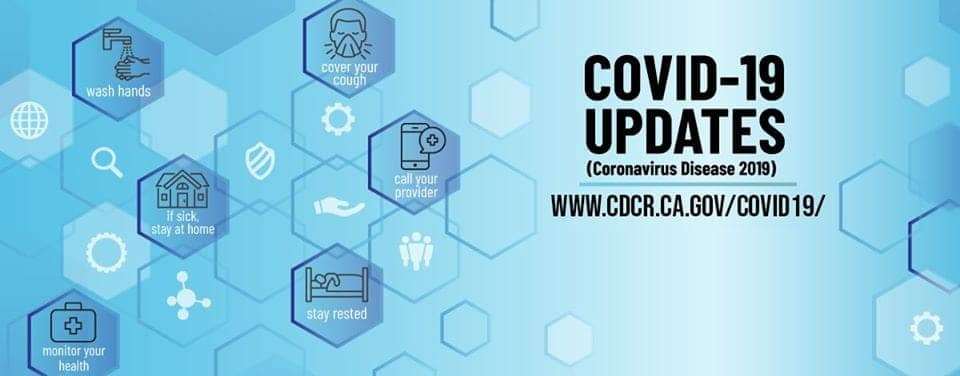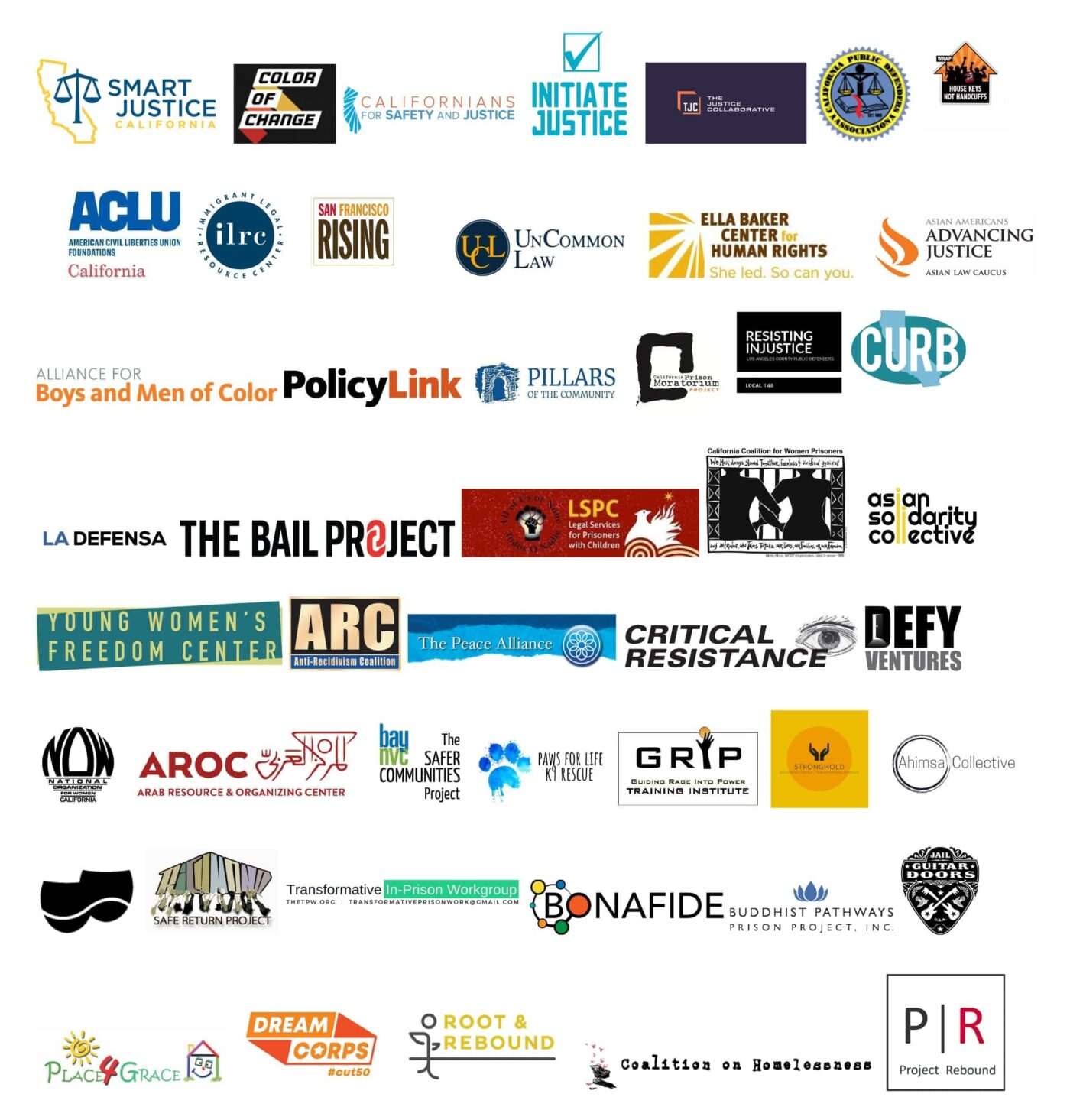
by The Justice Collaborative
Following up on “Justice organizations call on California Gov. Newsom to act now to reduce COVID-19 risks in state prisons,” The Justice Collaborative sent these more specific and detailed recommendations to key members of Gov. Newsom’s administration.
To: Deputy Cabinet Secretary Daniel Seeman, daniel.seeman@gov.ca.gov, and Deputy Legal Affairs Secretary Kelli Evans, Kelli.Evans@gov.ca.gov
Dear Dan and Kelli,
As a follow-up to our letter to the governor on Friday, March 13, 2020, we are writing to suggest more specific steps that can be taken to protect the health and wellbeing of all people in CDCR custody, the staff and the surrounding communities. As lawyers, advocates, philanthropists and service providers, we remain ready to assist in the release process, to increase services for those who are released and to support those who remain in custody.
California’s prisons have been overcrowded for decades. We have an aging population incarcerated. In order to address the public health crisis, actions must be taken now to reduce the population.
Public health experts are in agreement about this. The New York Board of Corrections made recommendations yesterday that extend much further than what we are recommending. The Los Angeles Times editorial board issued this today, urging all in charge of jails and prisons to act to expedite releases. The time to act is now.
We understand the valid concerns about where people will go and where they will be housed. Respectfully, when faced with loss of life, the primary goal for prisons must be to “flatten the curve” and provide for as much social distancing as possible.
We join public health experts in concluding that the single most effective way – perhaps the only way – to achieve risk-mitigating social distancing inside prisons is through accelerated release and other immediate density reduction steps. That said, your office and local governments are taking extraordinary steps to house the homeless and those who need to be quarantined, including in hotels and motels.
This can also be done for those released from prison. Existing service providers and philanthropic organizations stand ready to increase staffing and resources to accommodate an influx of community placement needs.
Below, please find more specific recommendations.
I. Population reduction proposals to reduce risk of transmission and death within facilities
Our shared goals are 1) to protect those at high risk of COVID-19; 2) to mitigate the threat of rapid spread that will overwhelm the health care system by reducing the population density within facilities to 100 percent of capacity; and 3) ensure that those released do not present either a health risk or a public safety risk to the community.
Accordingly, we are recommending the following:
A. Emergency release based on an individual’s COVID-19 risk
- Age: Release to parole or Post-Release Community Supervision (PCRS) individuals 60 and older who have five years or less on their sentence and all those 60 and over who have been determined to be low risk by CDCR’s internal evaluation. This internal evaluation may be a “comprehensive risk assessment” that has been done by the Board of Parole Hearings or any other assessment tool used by CDCR to assess risk, including current classification score or intake assessment.
- Health: Release to parole or PCRS individuals who are immuno-compromised or who are medically vulnerable because of diabetes, heart disease, respiratory condition or otherwise, who have five years or less on their sentence and all those in this cohort who have been determined to be low risk by any CDCR internal evaluation, as defined above.
B. Density reduction measures
We ask that your office also direct increased resources to addressing the commutation applications that are currently before you and grant the many worthy applications immediately.
- Accelerate release to parole or PCRS of those already found suitable for parole by the Board of Parole Hearings.
- Release to parole or PCRS all individuals deemed low risk by CDCR’s internal evaluation who have two years or less remaining on their sentence.
- Issue an emergency order prohibiting new prison admissions for the duration of the crisis.
- Release to parole or PCRS all women serving determinate sentences, which would allow one facility to be repurposed thereby reducing density in other facilities.
- For all individuals found eligible for release under Prop 57 and all those who have been re-sentenced pursuant to Penal Code section 1170.95 (SB 1437), lift all current holds and release forthwith to parole or PCRS.
- Release to parole or PCRS all those for whom staff have already recommended resentencing under 1170(d).
- We ask that your office also direct increased resources to addressing the commutation applications that are currently before you and grant the many worthy applications immediately.
C. Reduce density in housing units with high COVID-19 risk
- Reduce density in the most crowded housing units and dormitory-style housing units.
- Reduce density in housing units with a history of quarantine based on previous outbreaks.
D. Prevent overload of parole or PCRS caseloads
- Review all people who have passed their Presumptive Discharge Date and remove them from parole unless there has been new criminal behavior within the last 12 months.
- Release parole holds on all parolees currently held in county jails and prohibit additional detention for parole violations.
- End supervision for anyone who has been on PCRS for two years.
- Conduct a review of all persons on life term parole and consider discharge if a person has been on parole for three years and has had no parole violations within the last 12 months.
II. Suggestions for reentry and transitional houses to accommodate released people
Our shared goals are to provide safe standards for releasing people from prison that both protect the person being released and the community into which they are being released from possible infection.
A. Ways to increase available housing to accommodate releases and reduce overcrowding
- Allow and encourage those with families and loved ones who can house them to return directly to their families, without requiring a stay in transitional housing.
- Use the governor’s emergency powers to house people in available and vacant buildings that have kitchen facilities and other necessary infrastructure such as hotels, motels and college dorms.
- Provide funding opportunities for existing housing providers to expand rapidly, including offering the use of hotels and motels and other buildings and grant emergency funding for hiring staff.
- Provide resources for re-entry service providers who provide mental health, substance abuse and housing services so that they can safely remain open in order to provide essential services. For those services that are not open for physical visits, provide support and encouragement for utilizing teleservices.
- Enlist philanthropic organizations to assist with funding. (Should you be interested in pursuing this avenue, we can make introductions to our philanthropic funding partners who have indicated a desire and ability to assist.)
- Restrict unreasonable housing bans for people with convictions who are being released from custody, including any restrictions on living with family members in public housing.
B. Ways to establish safe standards for releasing people from prison
- Provide all people being released from prison and associated staff with protective gear including hand sanitizer, gloves and sanitizing wipes.
- Issue an activated Lifeline cellphone during release (aka Obama Phone). This will facilitate connecting with parole and probation in ways that minimize contact. Advocates can assist with this.
- Expand the CAL ID program to everyone released so they can file paperwork and photos and get IDs without visiting DMV in person.
- Work to reduce exposure and the possible spread by having people released from facilities where there has been a confirmed case by releasing people into a safe 14-day quarantine. Such facilities may include hotels and motels, as was provided for by passengers disembarking from a ship.
- Increase the Gate Money allocation by 1) not subtracting cost of clothing or transportation and 2) increasing base amount to $1,000.
- Minimize in-person contact between released people and parole or probation officers to protect both parties and reduce use of public transportation for office visits. In lieu of in-person parole meetings, use state-issued cell-phones or Zoom video check-in via a computer in the parolee’s home or transitional house.
III. Ways to ensure prisoner physical and mental health during the COVID-19 pandemic
We have shared goals of ensuring that all people are kept safe and healthy, both mentally and physically during this time. To that end, we start by saying that community groups are available to prepare informational resources for distribution, identify specific products, locate vendors to prepare packages, and assist with delivery and other logistics.
A. Distribution of information
- To promote the safety and mental health of people living inside prisons, increase the flow of information regarding COVID-19 and the state of the pandemic inside the prison, across the country and around the world:
- Provide key health information addressing the following topics via prison television stations, flyers, wall posters and local radio stations:
○ Information on COVID-19: what it is, how it is transmitted, symptoms, and risk groups.
○ Practical guidance for minimizing risk, specifically for people who are incarcerated.
○ Instructions on what to do if feeling ill, and what actions will be taken by the institution (including testing; where will people be housed; what access to the outside world will be provided).
- Instruct the medical staff and warden of each facility to share facility-specific updates daily to a designated inmate council comprised of representatives from each unit or cell block, e.g. Men’s Advisory Council, and to permit the inmate representatives to debrief their respective unit or cell block following each daily update.
- This information should also be made available to people with limited or no English (i.e., deliver in multiple languages), or to those who are non-readers, or with disabilities. Advocates from trusted community organizations are available to produce these resources, in order to increase credibility and compliance with outlined recommendations and reporting.
B. Distribution of supplies and materials
- Given the labor-intensity and potential health risks of operating canteen and distributing supplies, CDCR should permit the distribution of weekly packages containing the following:
- Cleaning supplies (hand sanitizer, gloves, tissues, cleaning fluid and rags)
- Hygiene products (soap, toothpaste, shampoo, feminine hygiene products as appropriate)
- Non-perishable nutritious food (e.g., trail mix, preserved meat, healthy soup packets)
- Writing materials (wireless notebook)
- Reading materials (books or magazines)
C. Communication with family and loved ones
It is imperative that inmates have the ability to safely and regularly communicate with family members and loved ones throughout this crisis. To eliminate the significant health risks associated with the use of shared landline phones and contraband cell phones, distribute basic cell phones to all people who are quarantined and, potentially, to the entire population. There is currently technology available to prescribe the telephone numbers that a given phone can call. Advocates are ready to assist with this as necessary.
D. Policies and procedures inside
We all want to contain the spread of the virus and care for all inside. To this end we suggest:
- Provide sanitizing wipes at landline phone stations to reduce person-to-person transmission.
- When feasible, provide 30-day supplies of medications to reduce contact and staff workload.
- Provide low density daily access to yard for anyone who is not ill, and instruct everyone to remain six feet apart at all times.
- Provide access to showers at least every 48 hours.
- Conduct regular deep cleaning of showers, i.e. minimum three times daily.
- House those who are deemed medically high risk in single cells only.
- Conduct weekly meetings between prison leadership (including medical staff) and inmate advisory councils to update on developments and discuss logistical challenges. Consider how prisoners might assist with the logistics outlined above and help compensate for potential staffing shortages.
- Provide protective equipment, e.g. gloves and cleaning materials, and training to prisoners and staff who participate in prep or distribution of food or other goods, like laundry and supplies.
We understand the strain and extreme pressure you are operating under in the face of this unprecedented challenge. We stand ready to assist in whatever way we can and appreciate your consideration of these proposals intended to save lives.
Sincerely,
The Justice Collaborative
Smart Justice California
ACLU California
Color of Change
Californians for Safety and Justice
Immigrant Legal Resource Center
Ella Baker Center for Human Rights
Asian Americans Advancing Justice -Asian
Law Caucus
California Public Defender’s Association
Los Angeles County Public Defenders,
AFSCME Local 148
UnCommon Law
San Francisco Rising
Policy Link
Pillars of the Community
Initiate Justice
Californians United for a Responsible
Budget
La Defensa
The Bail Project
Asian Solidarity Collective
Alliance for Boys and Men of Color
California Prison Moratorium Project
Legal Services for Prisoners with Children
California Coalition for Women Prisoners
Young Women’s Freedom Center
Anti-Recidivism Coalition
California National Organization for
Women
The Peace Alliance
Critical Resistance Los Angeles
Critical Resistance Oakland
Arab Resource and Organizing Center
Root and Rebound
Paws for Life K9 Rescue
Guiding Rage into Power
Safe Return
TheatreWorkers Project
Transformative In-Prison Workgroup
The Safer Communities Project
Stronghold
Bonafide
Buddhist Pathways Prison Project, Inc.
The Ahimsa Collective
A Place for Grace
Jail Guitar Doors
Dreamcorps/#cut50
Defy Ventures
Coalition on Homelessness
Project Rebound
Western Regional Advocacy Project
CC:
Dr. Nadine Burke Harris, California Surgeon General, OSGInfo@osg.ca.gov
Secretary Ralph Diaz, California Department of Corrections and Rehabilitation, ralph.diaz@cdcr.ca.gov
Dr. Diana Toche, Undersecretary, Health Care Services, CDCR, diana.toche@cdcr.ca.gov
Dr. Joseph Bick, Director, Division of Correctional Health Care Services, CDCR, joseph.bick@cdcr.ca.gov
Jennifer Shaffer, Jennifer.shaffer@cdcr.ca.gov
J. Clark Kelso, Receiver, ckelso@pacific.edu






